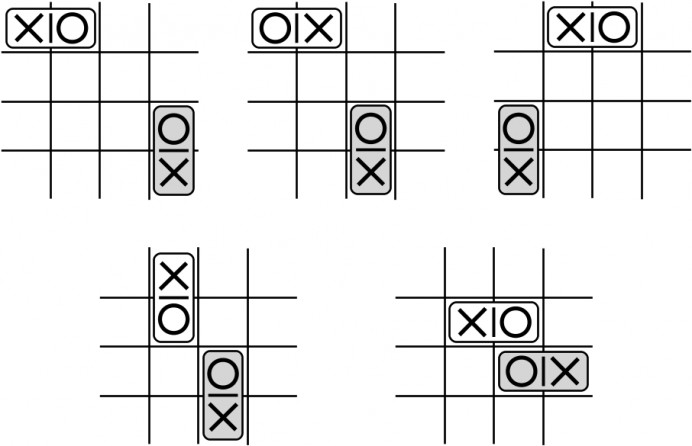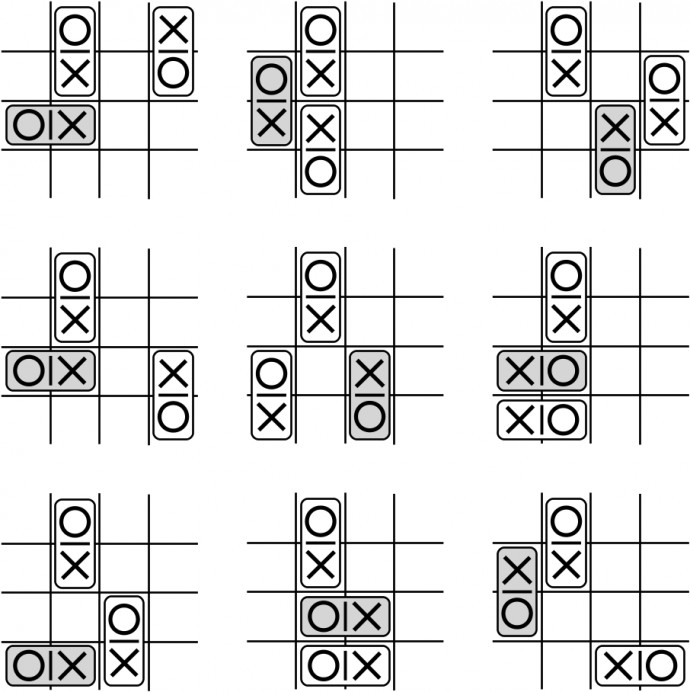Varsity Math, Week 10
Ain’t that just like the coach? He’s given the team some tough questions just as fall break is about to start. It’s also the end of this round of the relay — look for all the answers next week.

Mile High Stretch | Junior Varsity
The campus pranksters are at it again. They’ve managed to encircle the entire globe with a perfectly taut loop of rope, creating the largest possible circle on the surface of the Earth. The route they chose just happens to pass near Denver. Surprisingly, the city council makes a request — they want the rope to pass over Denver. So the pranksters agree to reroute the rope so it goes around the point on the Earth diametrically opposite Denver, as well as over the city, but they will need to get some extra rope. For the purposes of simplifying the problem, assume that (ignoring Denver) the Earth is a perfect sphere of diameter exactly 8,000 miles, and that the rope floats perfectly on the surface of every body of water. Also assume that all it takes to pass over Denver is to raise one single point of the rope to a mile in height above the surface of the sphere; anywhere else, the rope can touch the Earth or not and be at whatever height, as appropriate, as long as it is has no gaps or breaks and reaches a height of one mile above the surface of the sphere at some point.
What’s the minimum amount of extra rope that the pranksters have to add to their loop to pass over Denver? Your answer may be approximate; any value within one foot of the exact answer is fine.
Self-sequential Reference | Varsity Relay
Let R be the common ratio from Geometric Addition two weeks ago, and let
X = (R15 – (-1/R)15)/`sqrt 5`.
Now suppose that L is the least sequence of positive numbers whose first term is 2 and whose nth term gives the number of times that n appears in the sequence L, for every positive whole number n. (Here “least” means that for each k, the kth term of L is less than or equal to the kth term of any other sequence that satisfies the given properties and whose first k-1 terms match L.)
What is the Xth term of L?
Solutions to Week 9
Minipixel. Let’s start with the smallest grids. A 1×1 grid can’t be labeled with numbers strictly between zero and the size of the grid, so that’s out. There’s only one way to label a 2×2 grid, with all ones, and that leads to an ambiguous solution.
![]()
A 3×3 grid labeled with all ones is ambiguous in the same way, so we need to try using some labels equal to two. Now notice that the sum of the row labels and column labels must be the same, since both are equal to the number of pixels in the solution, and hence there must be the same number of twos in the row labels and in the column labels. If there is only a single two in each set of labels, it can’t be in the middle, because then any solution could be flipped about that middle row or column to produce another solution. So for four pixels in a 3×3 grid, that leaves only the case of a two at one end or the other of both the row and column labels, which turns out to be ambiguous in much the same way as the 2×2 grid was. (See below left.) The situation is much the same with five pixels in a 3×3 grid: if the “one” label occurs in the middle of a side, the solution will be able to be flipped about the middle, and so will not be unique; and the pattern with a “one” label at the end of both the row and column labels turns out to be ambiguous in a way similar to the 2×2 grid. (See below right.) All labels equal to two on a 3×3 grid turns out to be impossible to solve (try it!).
So now we know that the smallest unambiguous pixel puzzler must inhabit at least a 4×4 grid. All labels equal to 1 would be highly ambiguous, but could there be an unambiguous puzzle with five pixels? Three labels equal to one and one label equal to two in each direction? It’s not hard to see that in any such grid, there will be one solution with a black pixel in the row and column labeled by twos, and another solution with a white pixel there. (See below.) So all of those pixel puzzlers are ambiguous.
![]()
When we turn our attention to six pixels, however, it is not hard to construct a 4×4 puzzle, which has each row and column labeled by a single number between one and three, and which has a unique solution. (See below.) So a pixel puzzler must have at least 6 pixels to have a unique solution, if the row and column labels are all single numbers more than zero and less than the size of the grid.
![]()
Stick Tac Toe. Because of the symmetry of the board, there are really only six opening plays for player X. Five of these allow for a deadly reply by player O, losing the game for X. Those replies are shown in Table 1 (below), in which O’s moves are shaded for clarity. No further analysis is needed for any of these openings.

So to win, player X must open with an “X” in one of the four middle squares and an “O” in the adjacent edge square. Now there are many possible responses by player O. However, all but thirteen of them leave a second “X” in a position where player X can immediately win on the next turn. So we only need to analyze those thirteen positions where X does not have an immediate win. In nine of them, shown in Table 2 (below), player X has a move which leaves a double threat, making it impossible for player O to block both threats.
In the four others, shown in Table 3 (below), player X has a move which leaves a threat which O can only block in one way, setting X up for a win on the next turn. In these two tables, player X’s opening move (which is the same in every case) and player O’s countermove are shown in white, and player’s X winning response is shown with shading.

As that exhausts all of player O’s countermoves to player X’s best opening, we see that player O can only guarantee that he or she will be able to place two dominos before player X wins.
Previous Weeks
Week 9: Minipixel & Stick Tac Toe, solutions to Week 8
Week 8: Triple Jeopardy & Geometric Addition, solutions to Week 7
Week 7: Hex Truss & Windows on the World, solutions to Week 6
Week 6: Cross Training & Sesquicycle, solutions to Week 5 and Relay 1
Week 5: Laborious Lockup & Prime Event, solutions to Week 4
Week 4: Unsustainable Agriculture & Save the Camel, solutions to Week 3
Week 3: Deranged Assistant & Rush Job, solutions to Week 2
Week 2: Carambola Orchard & Farm Roundup, solutions to Week 1
Week 1: Instant Interrogation & Urn Respect
Find more puzzles at varsity.momath.org.



